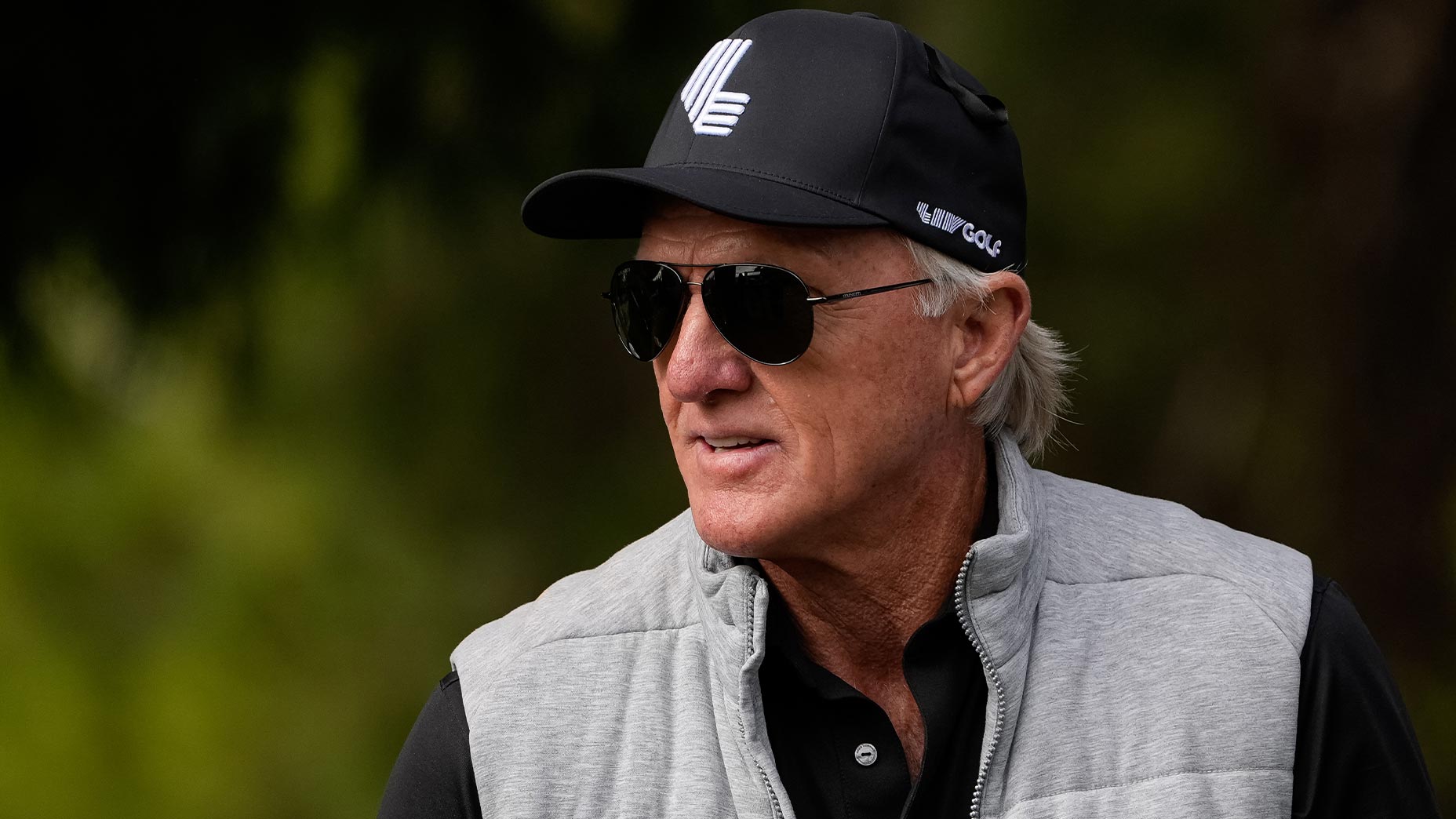This 1 quick fix to LIV Golf would instantly improve the league

Bryson DeChambeau celebrates with his teammates during a LIV Golf tournament.
Getty Images
Phil Mickelson stood just steps away from his driving range divot marks. This was nine months ago, in LIV Golf’s second season, at a LIV tournament outside London. Mickelson was only minutes away from his Wednesday pro-am tee time and still had some putting practice to tend to. But he had a points allocation grievance to air with Gary Davidson, then the acting COO of LIV Golf.
Davidson — one of the most important figures in the conceptualization of the rival golf tour — was explaining to Mickelson that his hands were tied. While the top 24 finishers in each LIV tournament receive points that aggregate in a season-long competition, tying for 24th didn’t guarantee any points. Mickelson — also one of the most important figures in the conceptualization of the rival golf tour — was among four players who had tied for 23rd in Spain the week prior. And along with Pat Perez, Lefty had lost to Louis Oosthuizen and Richard Bland on an overly simple tiebreaker. They all had made the same amount of money, but didn’t earn the same amount of points.
“Well, just change it,” Mickelson said to Davidson. Mickelson was flabbergasted, and rightfully so, because there’s no clear reason why points couldn’t be distributed in the same manner they are by other Tours across the globe, or even the World Golf Ranking. But at that moment, already halfway through the 2023 season, there was no changing the system.
Then came 2024. Look closely at player standings three tournaments into LIV’s 2024 season and you’ll see Mickelson has amassed precisely 11.33 points. A third of a point! Lefty got his way, mostly because nimbleness is possible at LIV Golf, a league that has spent the majority of its existence shifting its goalposts and making things up as it goes.
And while we’re on the topic of change, here’s one more suggestion: make the team purses more valuable. Way more valuable.
MORE LIV COVERAGE
MUCH HAS BEEN MADE OF LIV GOLF’S inflated purses — each of them $25 million, payouts matched by just one event on the PGA Tour. But hidden in those massive sums is the fact that just 20% is issued to the teams.
Would you say that LIV’s team competition represents only 20% of its empirical value?
Not a chance. The team golf format is one of the most interesting aspects of the league. Its leaders promise that franchise valuation is how LIV Golf becomes a viable investment — for both the Saudi PIF, the players it wooed from the PGA Tour, the sponsors it tries to attract and even the pie-in-the-sky dream that golf-loving billionaires would purchase teams of their own. Every tournament features a winner who raises the L-shaped trophy, but who gets all the Getty photos taken of them spraying champagne up on stage? The team.
The team dynamic has been as integral as anything in the PIF’s theoretical merger with the PGA Tour. It has been well understood for months now that Yasir Al-Rumayyan, the PIF governor, cares about establishing Team Golf — capital T, capital G — as a Saudi-led innovation to the entire sport. The Saudis’ biggest contribution to the women’s game is what again? The Aramco Team Series, sponsored by a $2 trillion Saudi petroleum company. It’s similarly been made clear that if a deal gets completed between the PGA Tour and the PIF, it will come as a result of Tour players accepting more team events into their annual schedule. So, yes, team golf matters now more than ever. And yet, you likely have no clue where Bubba Watson’s RangeGoats rank this year. Or Cam Smith’s Ripper GC.
Imagine a world in which half of the $25 million was earmarked exclusively for the team competition. Suddenly $1,875,000 — rather than just $750,000 — would be dished out to every member of a winning squad. Graeme McDowell’s final-round 65 in Vegas last month pushed Brooks Koepka’s Smash GC into a team title. Statistically, it was the best round of tournament golf G-Mac had played in more than five years, but it would have pocketed him an additional $1.1 million if team finish was just as valuable as players’ individual finishes. You know, the way LIV’s strongest supporters would have you believe.
Keeping Smash GC in mind, Brooks Koepka’s angst about 2023 teammate Matthew Wolff would have been an even bigger deal than it was at the time. Thomas Pieters’ troubling form since joining LIV — dropping from 46th in DataGolf’s rankings to 297th — would be worth analyzing, but is it really costing his team much? The Majesticks’ continued employment of three aged-out pros would only look more foolish the longer it drags on. Is that the best way to run a franchise? Maybe Ian Poulter, Henrik Stenson or Lee Westwood should be bought out of their contracts to make room for stronger performers.
Dustin Johnson trading away Talor Gooch for Peter Uihlein was properly chastised in February 2023 because no one of sound mind would consider the two players to possess the same golfing ceiling. But building a team at LIV has been far more rooted in friendships and convenience than, say, the anguish that Lakers owners feel as they trade for a new starting point guard.
Team sports thrive on these dilemmas, though. On talking points and debate. On the fact that one player (Mito Pereira) is weighing down his dominant teammate (Joaquin Niemann). In LIV Golf’s perfect world, golf fans are all applying these same theories to its still infantile system, because team management is tricky. Contracts can be inflated. Free agency is riddled with mistakes. But that’s just not happening in the current system. The rich individuals are playing a mostly individual game and then rushing to speak about its team elements, only to be paid predominantly like individuals. Something about that is off balance. To quote Mickelson again, it might be worth just changing it.

















